A Paris Walking Tour from the Arc de triomphe to the Tuileries Garden
This walk starts at the other end of Champs-Élysées, a 2 kilometers long avenue that connects Place de la Concorde and the Place Charles de Gaulle.
A walk along the famed avenue des Champs-Élysées introduces many of Paris’ most well-known spots. Here are some of them.
ARC DE TRIOMPHE
Arc de Triomphe has its own metro station called Charles-de-Gaulle-Étoile, making it an ideal start of a walking tour. Situated at the center of Place Charles de Gaulle in the 8th arrondissement, it offers a great view of Champs-Élysées.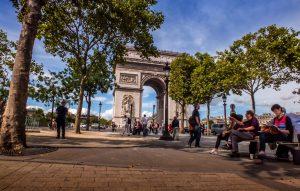
The Arc is one of the most iconic monuments in Paris. Erected between 1806 and 1836, it was commissioned by Napoleon Bonaparte after the victory at Austerlitz and was designed by Jean Chalgrin in honor of those who fought at the French Revolutionary and Napoleonic Wars. Names of generals and all French victories are inscribed on the structure.
The arc is a huge Neoclassical monument. It measures 50 meters in height, 45 meters in length, and 22 meters in width.
CHAMPS-ÉLYSÉES
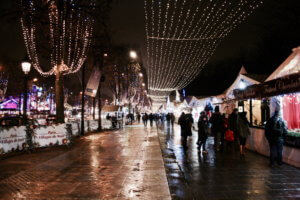 The boulevard itself is worth a look. Each year, it plays host to many Bastille Day (July 14) events including a military parade. On regular days, it boasts rectangular groves that fringe many fashion shops, theaters, and restaurants.
The boulevard itself is worth a look. Each year, it plays host to many Bastille Day (July 14) events including a military parade. On regular days, it boasts rectangular groves that fringe many fashion shops, theaters, and restaurants.
There was a time when Champs-Élysées was just a flat shade of green on the map: fields and gardens. The initial plan, made by André Le Nôtre in 1667, pegged the site to be just an extension of the nearby Tuileries Garden. Over centuries, it has evolved into one of the most famous and most fashionable streets in the world.
MUSEE JACQUEMART ANDRE
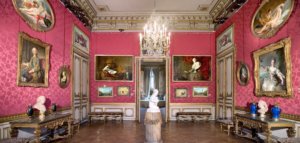 The Musée Jacquemart-André is a public museum located at 158 Boulevard Haussmann. The museum was created from the private home of Edouard André(1833–1894) and Nélie Jacquemart (1841-1912) to display the art they collected during their lives.
The Musée Jacquemart-André is a public museum located at 158 Boulevard Haussmann. The museum was created from the private home of Edouard André(1833–1894) and Nélie Jacquemart (1841-1912) to display the art they collected during their lives.
Édouard André, the scion of a Protestant banking family, devoted his considerable fortune to buying works of art. Every year, the couple traveled in Italy, amassing one of the finest collections of Italian art in France. Art work include Tiepolo frescoes and various paintings by Italian masters Uccello, Mantegna and Carpaccio.
GRAND PALAIS
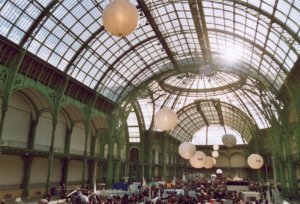 Another important historic site along Champs-Élysées is the Grand Palais, a “monument dedicated by the Republic to the glory of French art.” The grand, imposing structure edifice houses an exhibition hall and a museum complex. The Beaux-Arts beauty also serves as the venue for many of Chanel’s fashion shows.
Another important historic site along Champs-Élysées is the Grand Palais, a “monument dedicated by the Republic to the glory of French art.” The grand, imposing structure edifice houses an exhibition hall and a museum complex. The Beaux-Arts beauty also serves as the venue for many of Chanel’s fashion shows.
Built in 1897, the palace wears a blend of Classical and Art Nouveau designs, most evident in its stone facade and ironwork, as well as in its grand staircase. The most eye-catching are its glass barrel-vaulted roofs, framed by light steel, allowing natural light in.
Just across the Grand Palais is the Petit Palais.
JARDINS DES CHAMPS-ÉLYSÉES
At this point, you’ll probably be exhausted from all the hours of walking. Fret not! Beyond the groves of trees that line the avenue are pockets of greens, perfect for a brief rest. Some statues and fountains adorn the gardens. But you might want to spend a few euros on a serving of crepe from the unassuming stalls that hide under the foliage.
PLACE DE LA CONCORDE
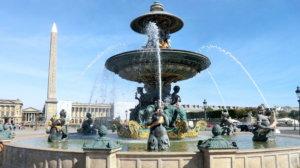
The largest public square in Paris, the Place de la Concorde spans 8.64 hectares at the eastern end of Champs-Élysées. Its most prominent feature: the Obelisk of Luxor, a giant needle-shape Egyptian monument at the very center of the site. The obelisk is flanked by the Fontaines de la Concorde, designed by Jacques Ignace Hittorff. But the place itself was laid out Ange-Jacques Gabriel in 1755 in honor of King Louis XV.
At the height of the French Revolution, the square was bestowed with a new name: aptly, “Place de la Révolution.” It was here that the guillotine would end the reign (and life) of King Louis XVI on 21 January 1793.
TUILERIES GARDEN
 Just east of Place de la Concorde lies the Jardin des Tuileries, once the garden of a royal palace which was opened to the public after the French Revolution. Construction of the Italian Renaissance garden was ordered by Queen Catherine de Medicis in 1564, after the death of her husband, King Henry II. She enlisted the help of Bernard de Carnesse, an architect from Florence. It has seen a number of redesigns over the centuries as ownership of the site was passed on from one ruler to another.
Just east of Place de la Concorde lies the Jardin des Tuileries, once the garden of a royal palace which was opened to the public after the French Revolution. Construction of the Italian Renaissance garden was ordered by Queen Catherine de Medicis in 1564, after the death of her husband, King Henry II. She enlisted the help of Bernard de Carnesse, an architect from Florence. It has seen a number of redesigns over the centuries as ownership of the site was passed on from one ruler to another.
Today, the Tuileries Garden is a famous tourist spot and public park. Its centerpiece is an octagonal basin, a realization of landscape architect André Le Nôtre’s vision.



Comments are closed.